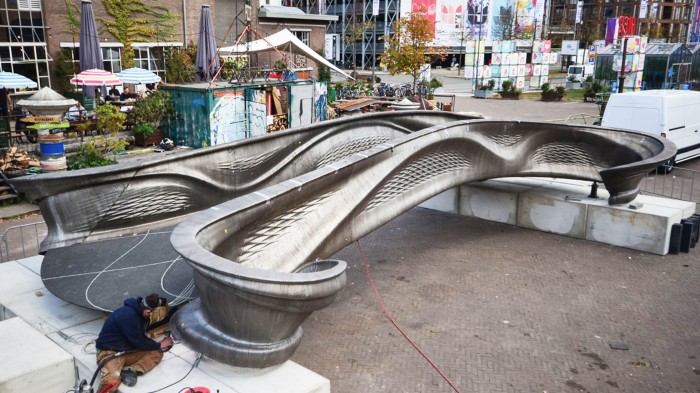
With the introduction of generative design in the past decades, the ways in which architecture is rendered has been completely overwrought. One work that I particularly admire is MX3D’s 12-meter long steel bridge in Amsterdam. It is entirely 3-D printed – the construction utilized two industrial level 3-D printers that worked on opposite ends to meet in the center. This method of construction is largely unprecedented, and was only possible through the combination of parametric design and artificial intelligence. One amazing feature of the bridge is that it continues “learning” throughout its lifespan – the designers included sensors connected to a computer model that informs of the performance and behavior of the physical bridge in real time. It measures environmental data such as air quality as well as structural information such as load and strain. This is important because it shows the designer’s conscientiousness of their work’s future impact. They made a practical work of art that’s sustainable for years to come.
The algorithm developed to design the structure is undoubtedly complex, requiring assistance from companies such as Autodesk. It took a multitude of parameters into account, considering the ways in which people and the environment will react to, and interact with, it.
In general, architecture is at the crossroads of aesthetic and practicality. The creator’s artistic sensibility manifests itself in the uniquely defining, yet structurally reliable and complex formation.
![[OLD FALL 2020] 15-104 • Introduction to Computing for Creative Practice](wp-content/uploads/2021/09/stop-banner.png)